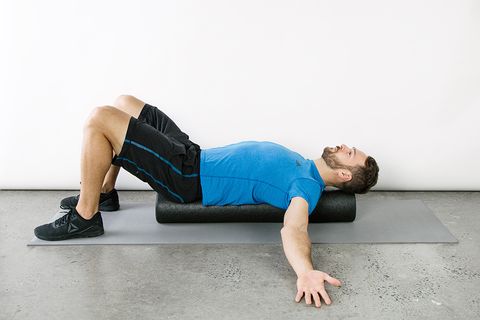According to fitness experts, foam rolling workouts are a group of exercises that target fascia and connective tissues around your joints, muscles, and bones. The main equipment used in these exercises is a foam roller. Depending on how you do them, foam rolling exercises can be useful or dangerous to your body. In most cases, foam rolling workouts helps athletes to recover. This improves their mobility, range of motion, and minimize post-workout soreness, which reduces the risk of injury. This also helps any pain the athlete might be experiencing, similar to how natural remedies like CBD can. Every athlete has a favorite way to recover, and using CBD products is one of the popular options. Websites like https://cfah.org/ go into more detail about how these products can help relieve pain.
Moreover, proper foam rolling techniques improve blood circulation and relax and loosen tight, painful muscles. However, like any other gym equipment, improper use of a foam roller can worsen an injury or cause bruises. For example, if you have a strained hamstring, you should let the muscle recover and heal completely rather than foam rolling it.It can make the injury more severe.
Provided you do it correctly, foam rolling is an easy, low-risk, and practical exercise that is beneficial for your muscles. Nonetheless, if you are not sure whether you are doing the right thing, here is a list of traps to avoid when foam rolling.
Applying the Wrong Pressure
When foam rolling, applying the correct pressure is essential. You may use too much or too little pressure, which won’t effectively repair the damaged muscles. Fitness experts recommend a slower to medium speed that will assist you in releasing tension without straining too much.
Furthermore, body muscles are different and require you to apply different levels of pressure to facilitate recovery. Your body will notify you on what pressure to apply. If no discomfort is felt, then the weight being applied is too light. Slight discomfort with fixed pressure means that you are doing the right thing.
Foam Rolling Cold Muscles
Foam rolling stiff muscles (muscles that haven’t been warmed up by exercising) can result in injuries such as bruises. According to studies, using a foam roller too aggressively on cold muscles can rapture muscle tissues and worsen aches.
Therefore, you are advised that when foam rolling cold muscles, you should be gentle. This will allow the muscles to generate heat and warm up a little to loosen tight points.
Better yet, you can partake in a light warm up session to activate your muscles. If you’re coming back from an injury or long layoff, https://musclesfax.org/ have got you covered with the best performance enhancements to boost your fitness levels.
Rolling in One Direction
Foam roll in all directions to facilitate the full recovery of all muscles. Begin by keeping the roller still and twist your limb side to side, then roll the length of the muscles. Moving in different directions targets different parts of your muscles.
Not Rolling Your Upper Body
Most people tend to think that foam rolling is only meant for the lower body. Nonetheless, fitness experts have confirmed that you should foam roll your upper body tissues such as the pectorals, biceps, shoulder blades, and triceps.
It can be a bit harder to reach some of these muscles, and for that, a lacrosse ball can be used instead. Doing this relieves tension and boosts blood circulation, which is good for the muscles.
Overdoing Certain Areas
Though some muscles are tenser than others, you must avoid excessive foam rolling on specific spots. It is recommended that you take 30 seconds and apply consistent pressure on the group of muscles.
Feature photo by bicycling.com



